State College then and now, from farmland to college town
Penn State began as a small agricultural college nearly 160 years ago and has changed drastically.
-
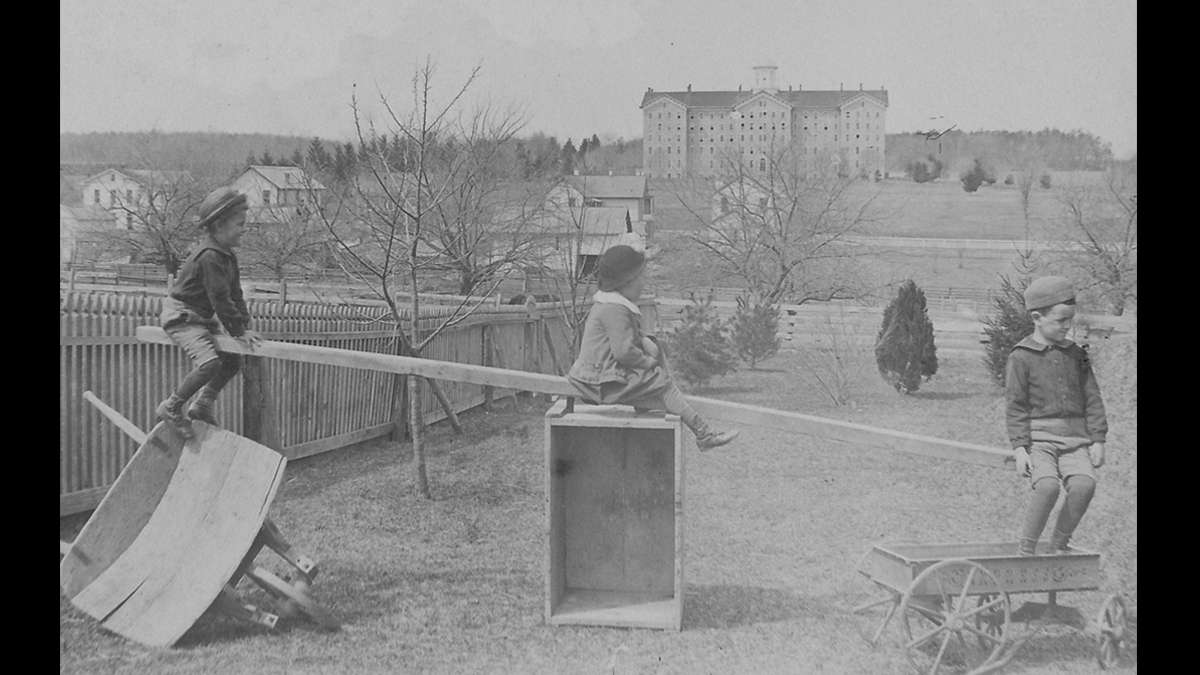
Children play near Pugh Street and Beaver Avenue in State College, Pennsylvania with the original Old Main in the distance circa 1885. (Image courtesy of the Centre County Historical Society)
-
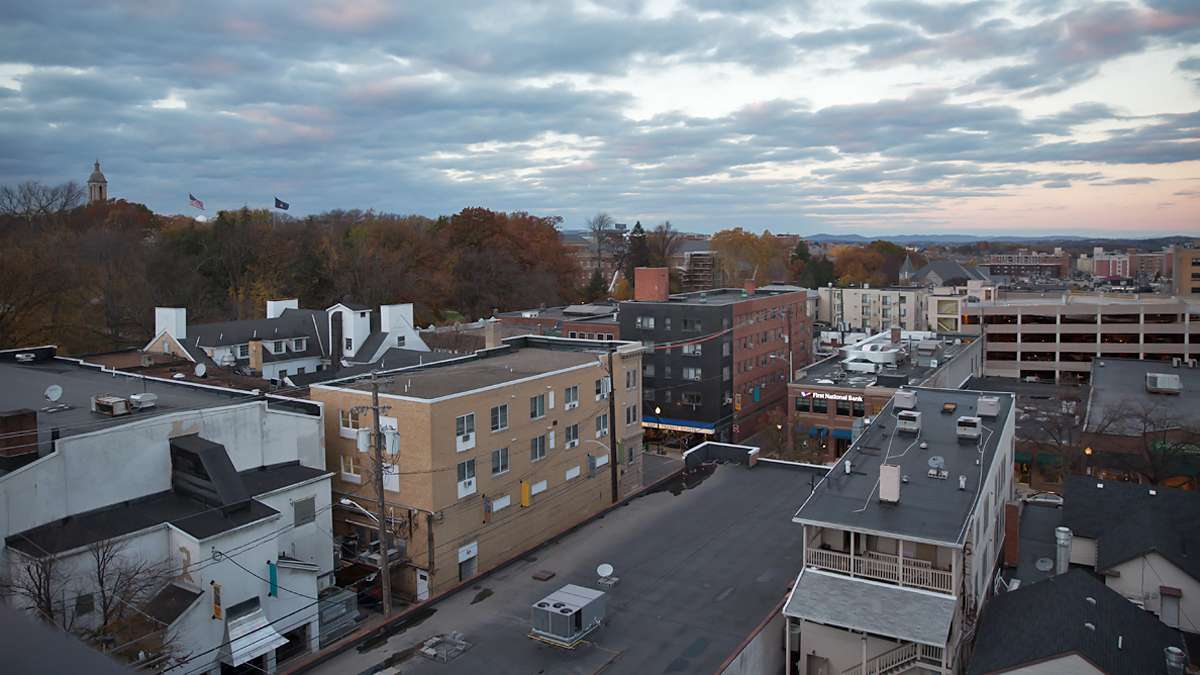
Bird’s eye view of downtown State College, Pa. from near Pugh Street. The bell tower of Old Main (far left) peaks over the trees on Penn State campus. (Lindsay Lazarski/WHYY)
-
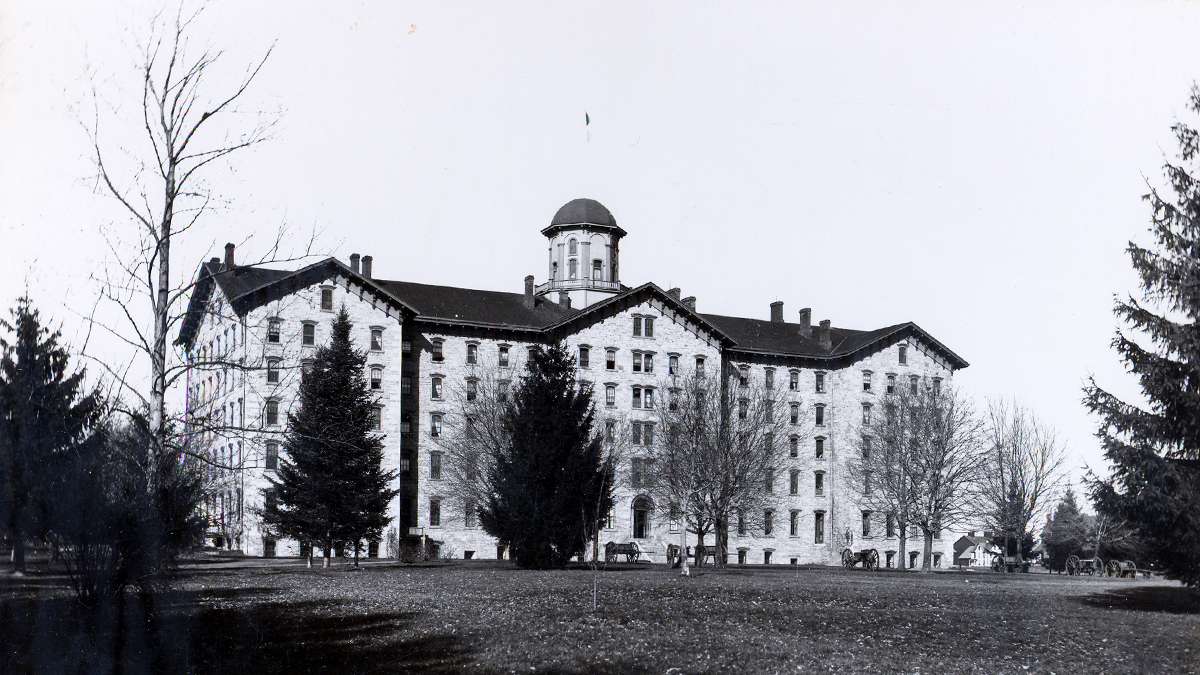
A view of the original Old Main known as 'Main Building' at Penn State circa 1863-1894. Made of limestone, the building was designed and constructed around the 1850’s. (Image courtesy of the Centre County Historical Society)
-
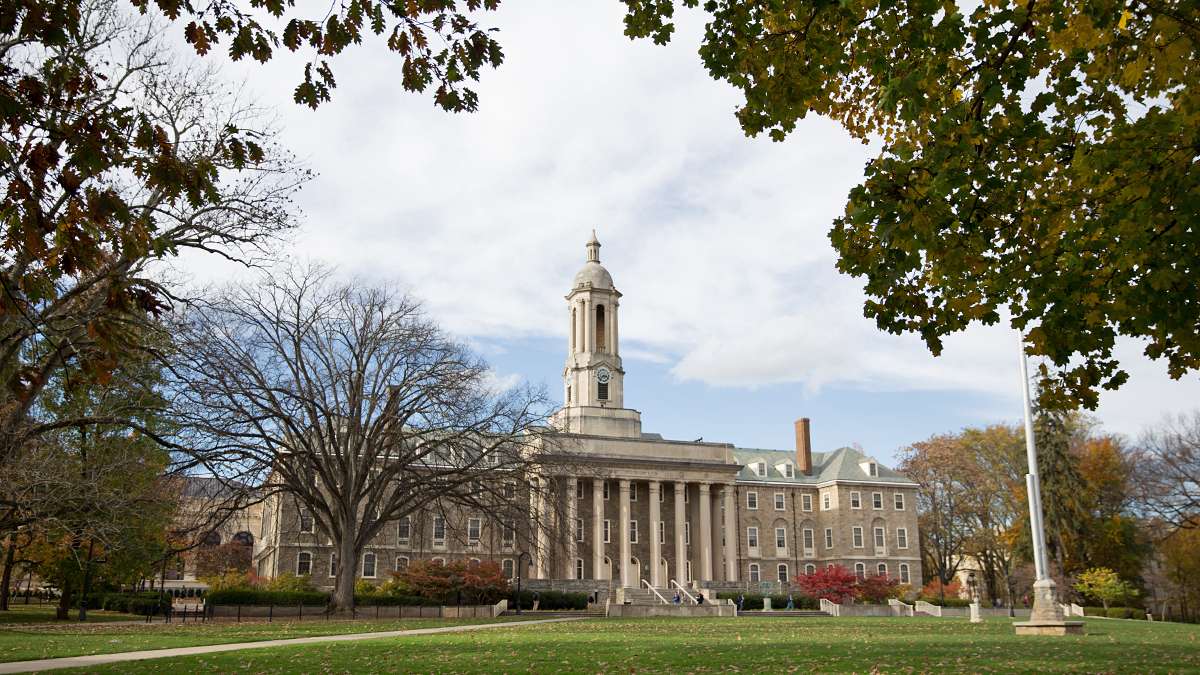
In 1929, the original building was razed and replaced by Old Main which stands as an administrative building and campus landmark today. (Lindsay Lazarski/WHYY)
-
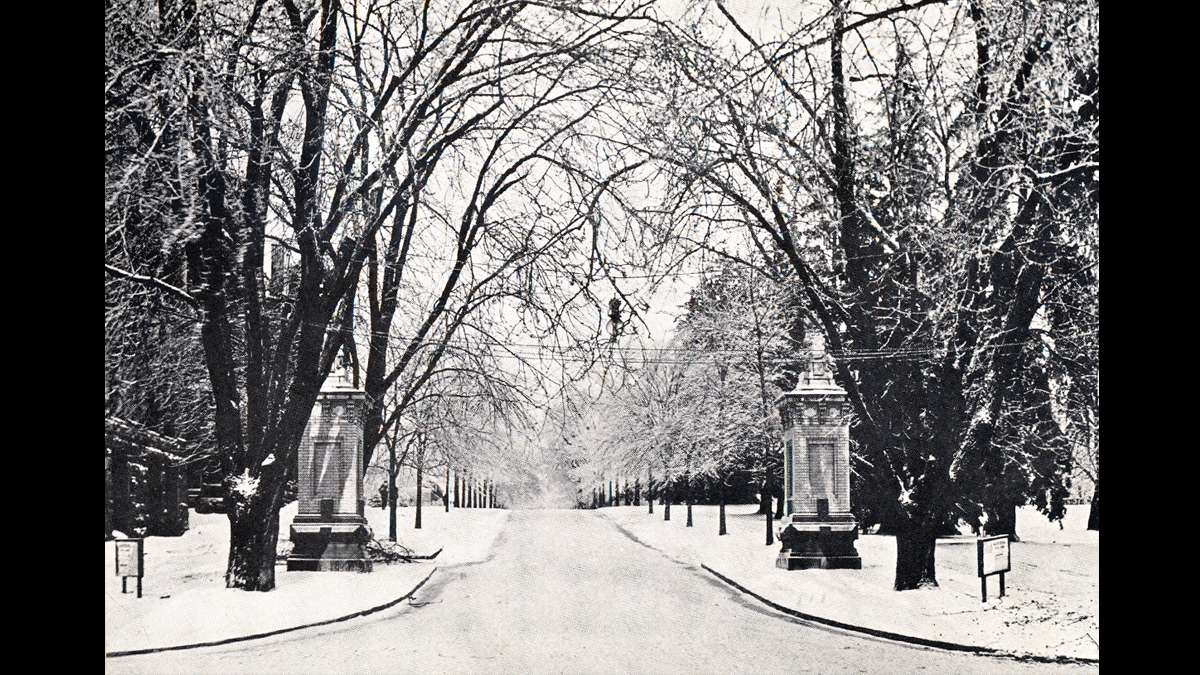
One of the entrances to Penn State campus in the winter of 1912. (Image courtesy of the Centre County Historical Society)
-
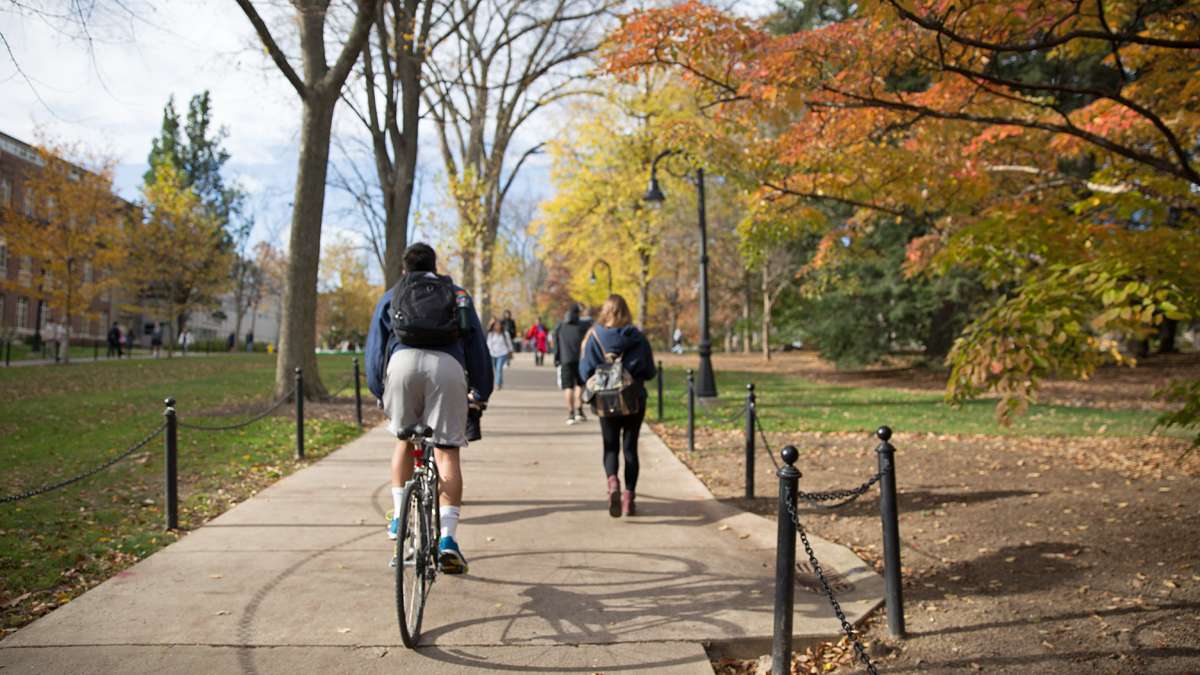
Students enter Penn State campus near Old Main Lawn and College Avenue. (Lindsay Lazarski/WHYY)
-
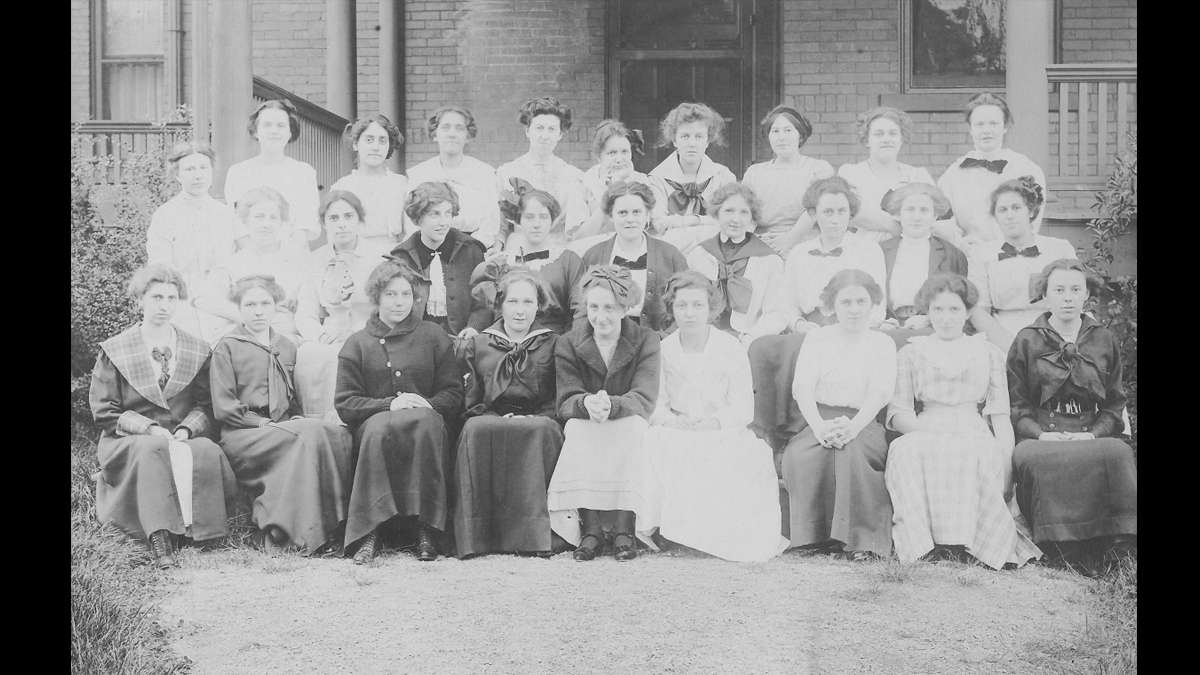
Penn State coeds circa 1911. (Image courtesy of the Centre County Historical Society)
-

Emily Flanigan (far left), a Junior studying mechanical engineering at Penn State, waits at a bus stop with other students on College Avenue. (Lindsay Lazarski/WHYY)
-
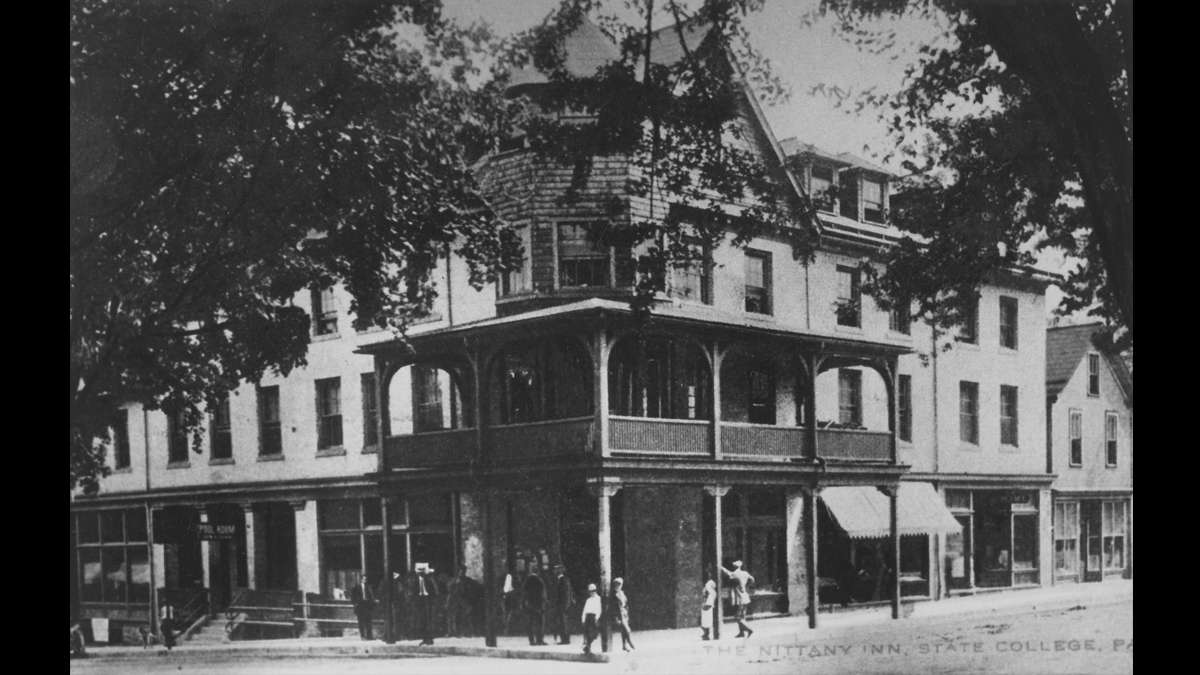
A group gathers outside of The Nittany Inn, later known as Hotel State College in downtown State College, on the corner of College Avenue and S. Allen Street, circa 1912. (Image courtesy of the Centre County Historical Society)
-
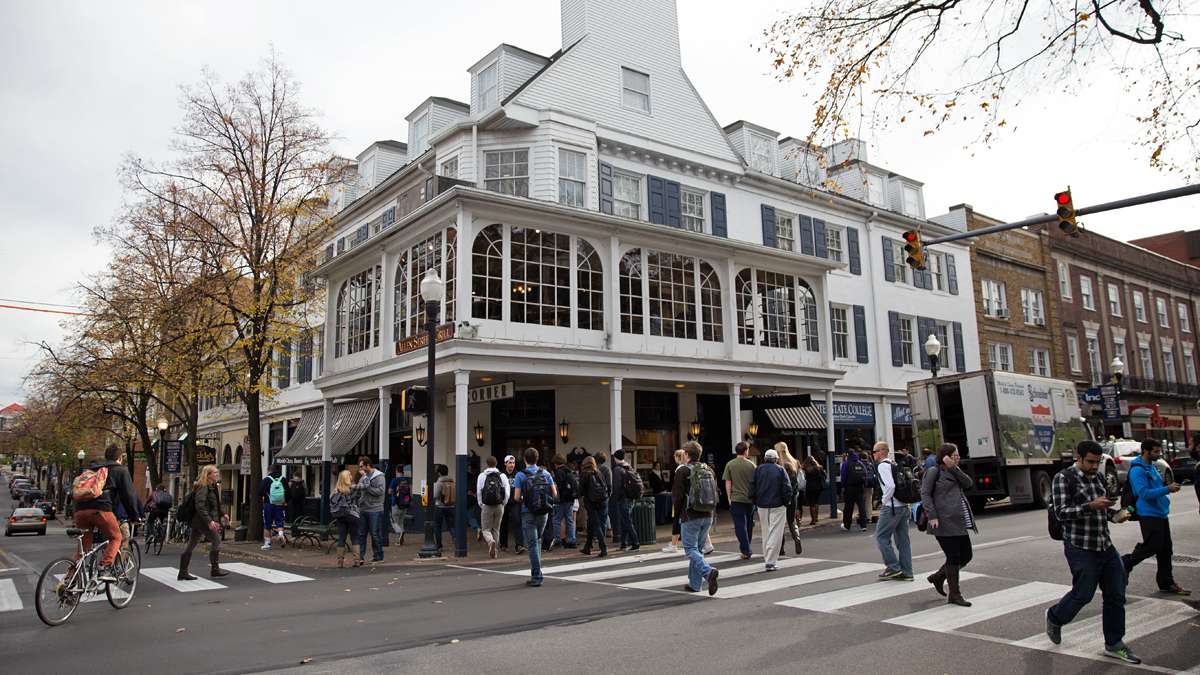
Pedestrians cross in front of The Corner Room at the intersection of College Avenue and S. Allen Street steps away from Penn State campus. (Lindsay Lazarski/WHYY)
-
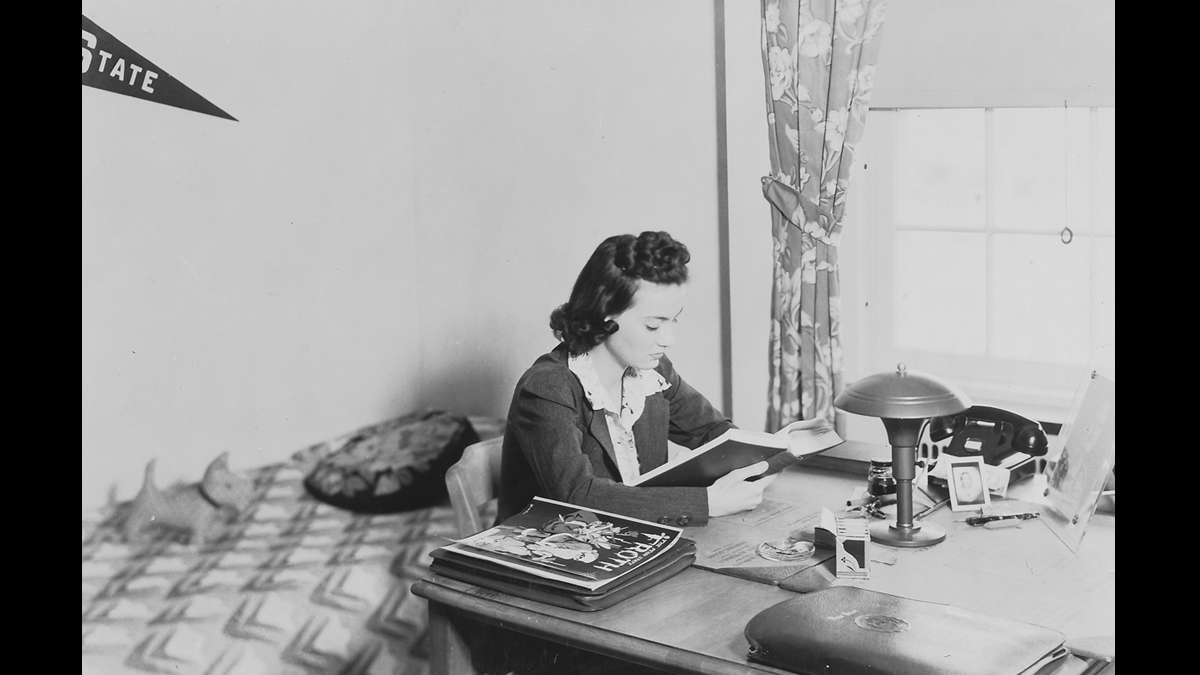
An unidentified woman studies at the Grange Memorial Dormitory for Girls — now known as the Grange Building. (Image courtesy of the Centre County Historical Society)
-
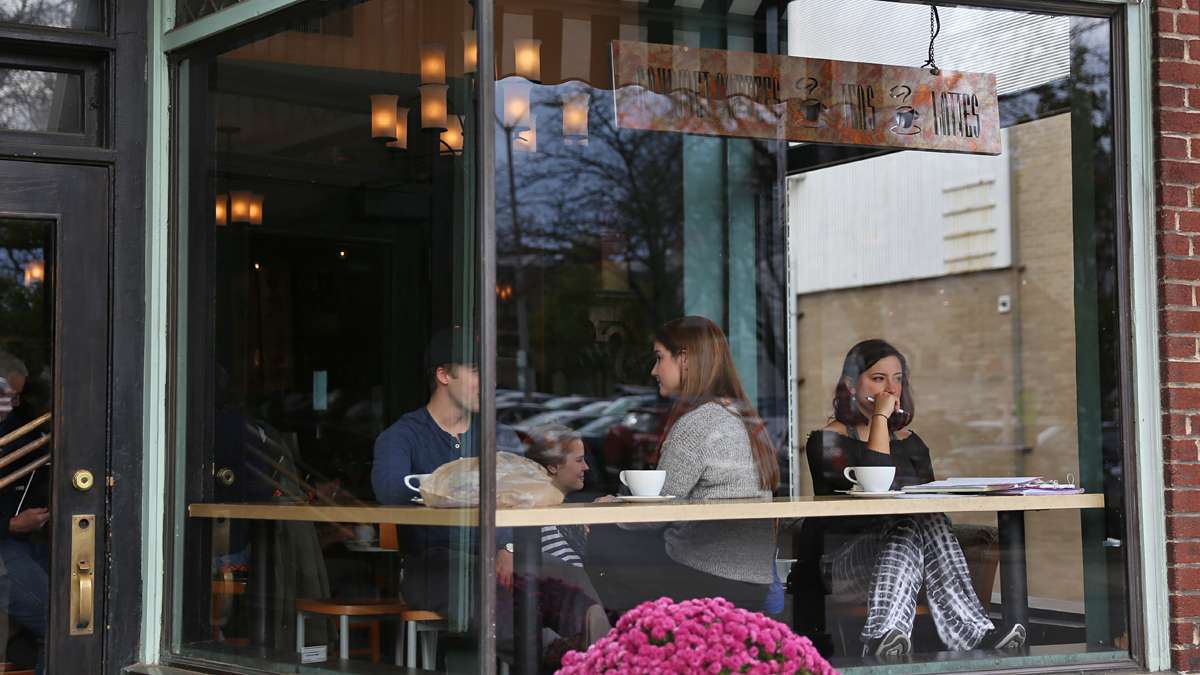
Natalie DeSisto, a junior from Pittsburgh, studies general science at Saint’s Cafe on Beaver Avenue in downtown State College. (Lindsay Lazarski/WHYY)
-
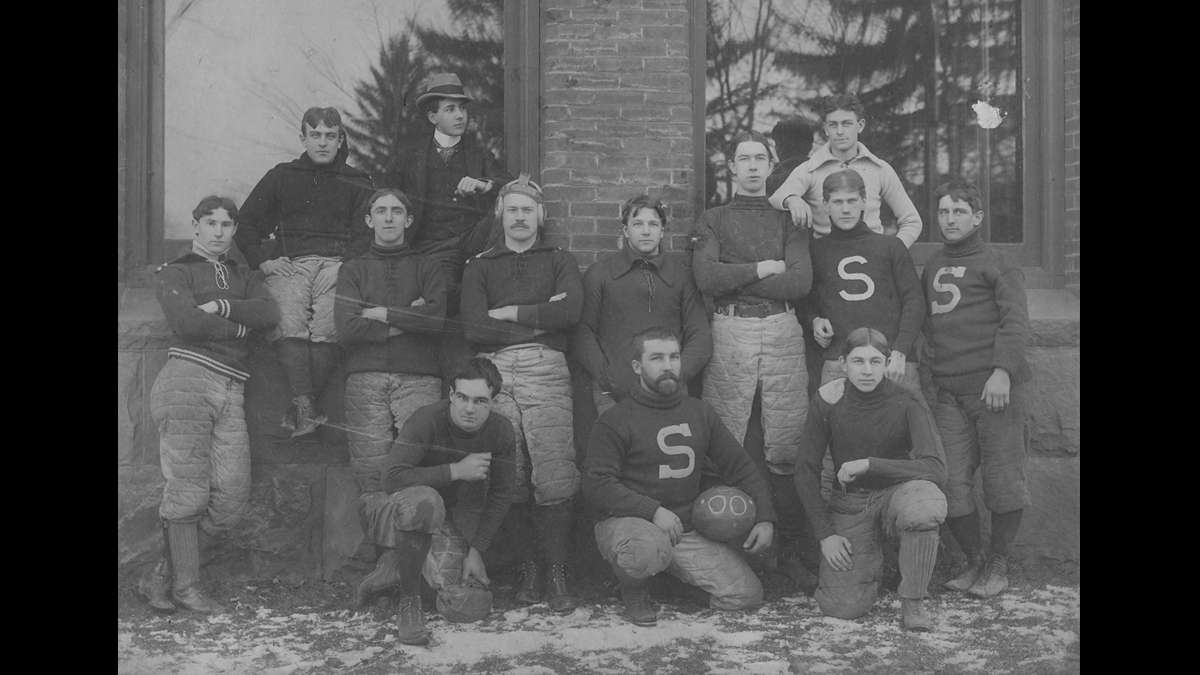
Penn State football team circa 1900. (Image courtesy of the Centre County Historical Society)
-
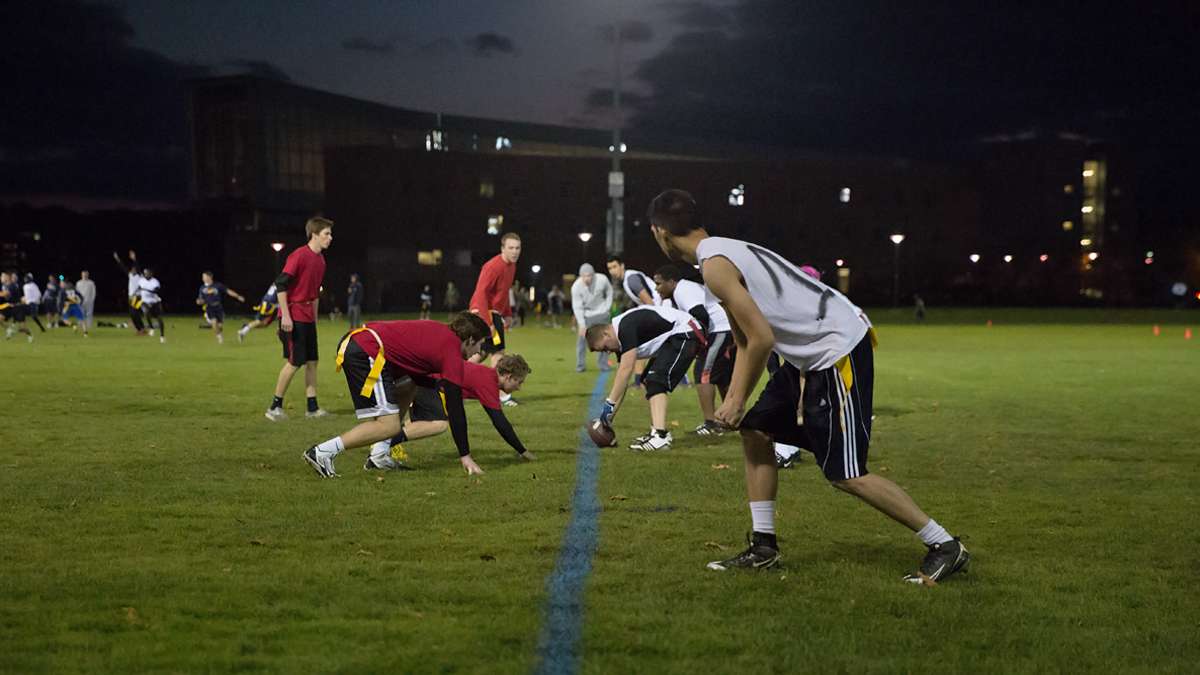
A group of students play intramural flag football on a fall evening at Penn State University. (Lindsay Lazarski/WHYY)
-

Fans watch a pre-game ceremony honoring the 1909 football team before the first game played at Beaver Stadium in 1960. (Image courtesy of the Centre County Historical Society)
-

A sellout crowd wears mostly white, as part of a 'white-out' during a recent football game between Penn State and Ohio State at Beaver Stadium. (AP Photo/Gene J. Puskar)
-
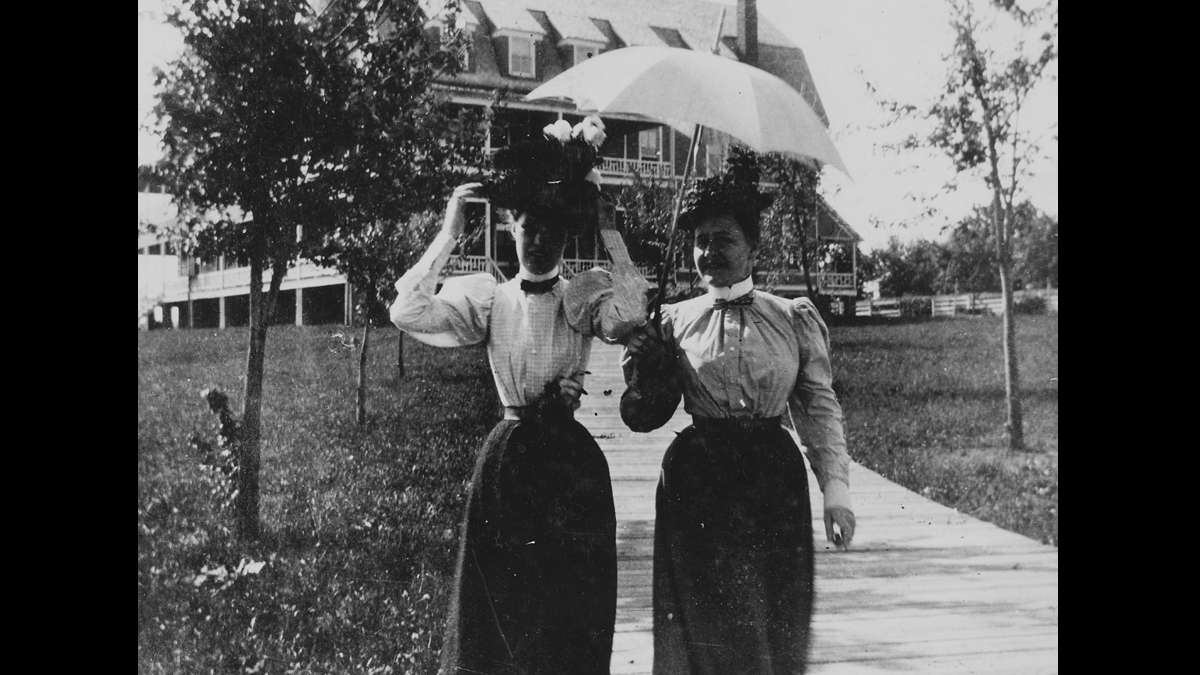
Miss Billy Cassin (left) and Clarea Tuttle walk near Penn State campus. (Image courtesy of the Centre County Historical Society)
-
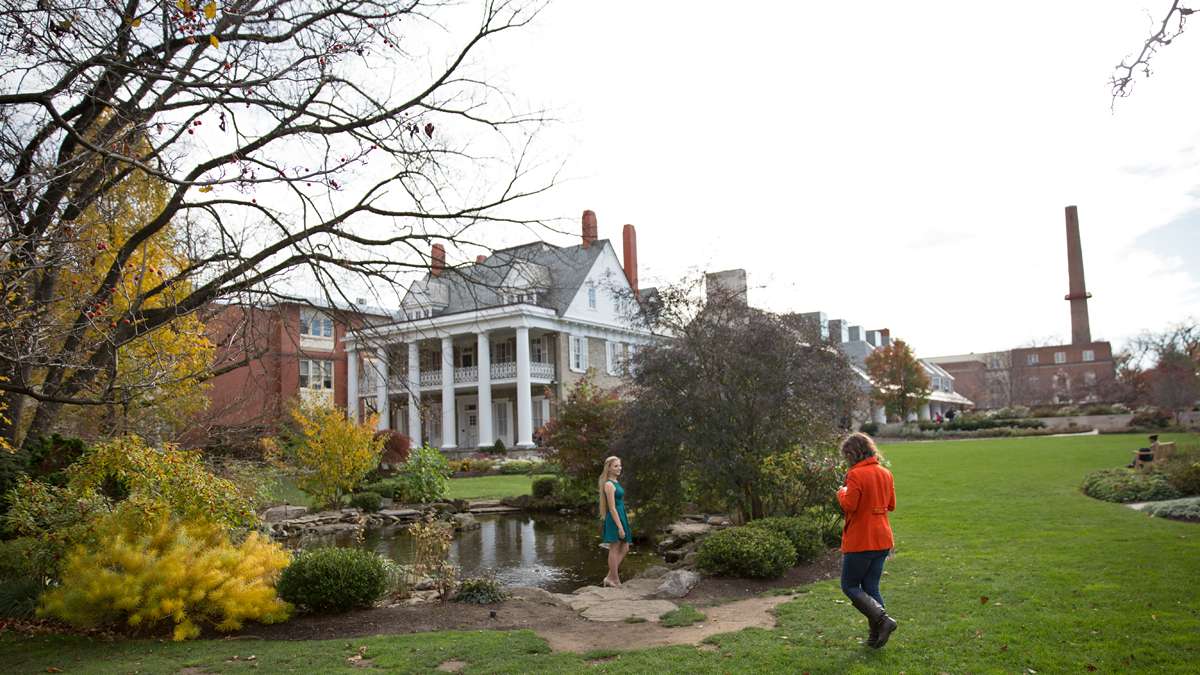
Senior Leah Eder from Lansdale, Pennsylvania poses for a graduation portrait in front of the Hintz Family Alumni Center as sophomore Brianna Basile from Macungie, Pa. takes her photo. (Lindsay Lazarski/WHYY)
-
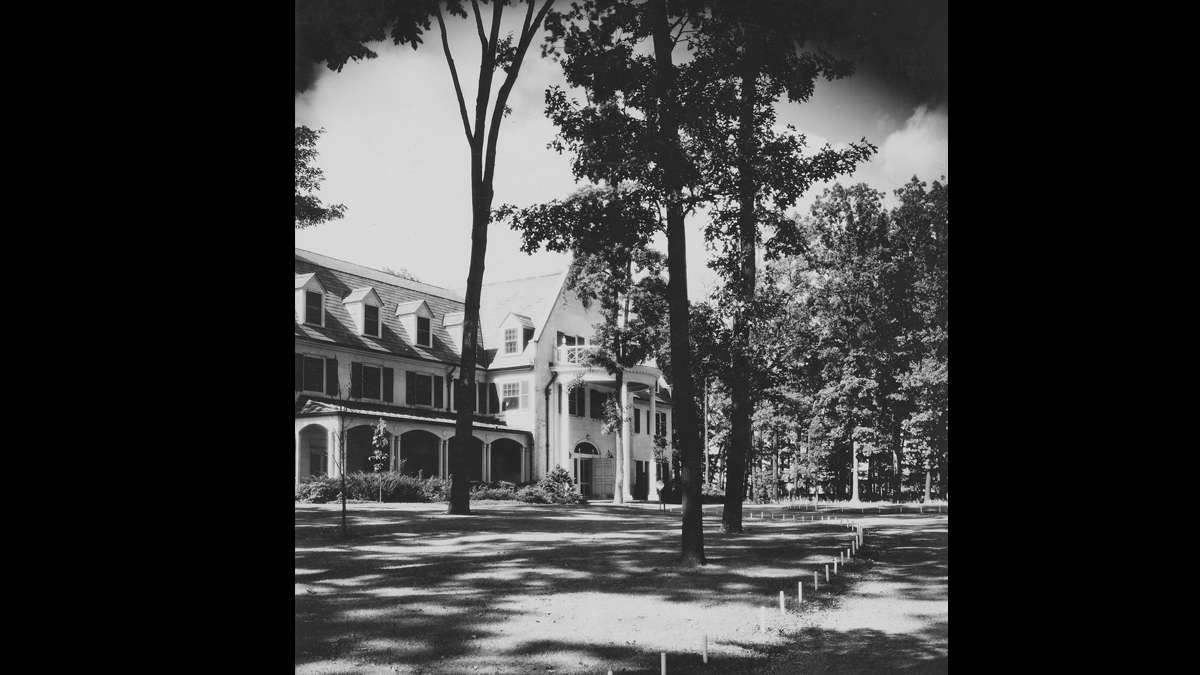
Front entrance to Nittany Lion Inn on Penn State campus. (Image courtesy of the Centre County Historical Society)
-
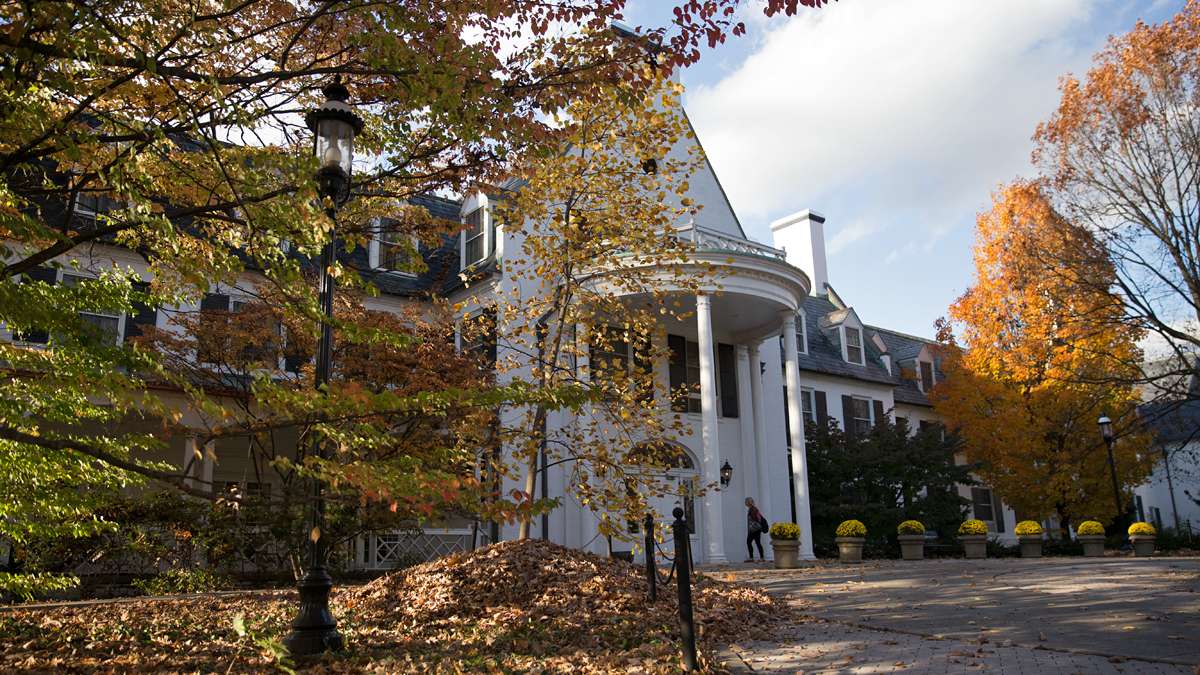
The Nittany Lion Inn was built in 1931 and is one of two hotels located on campus. (Lindsay Lazarski/WHYY)
-
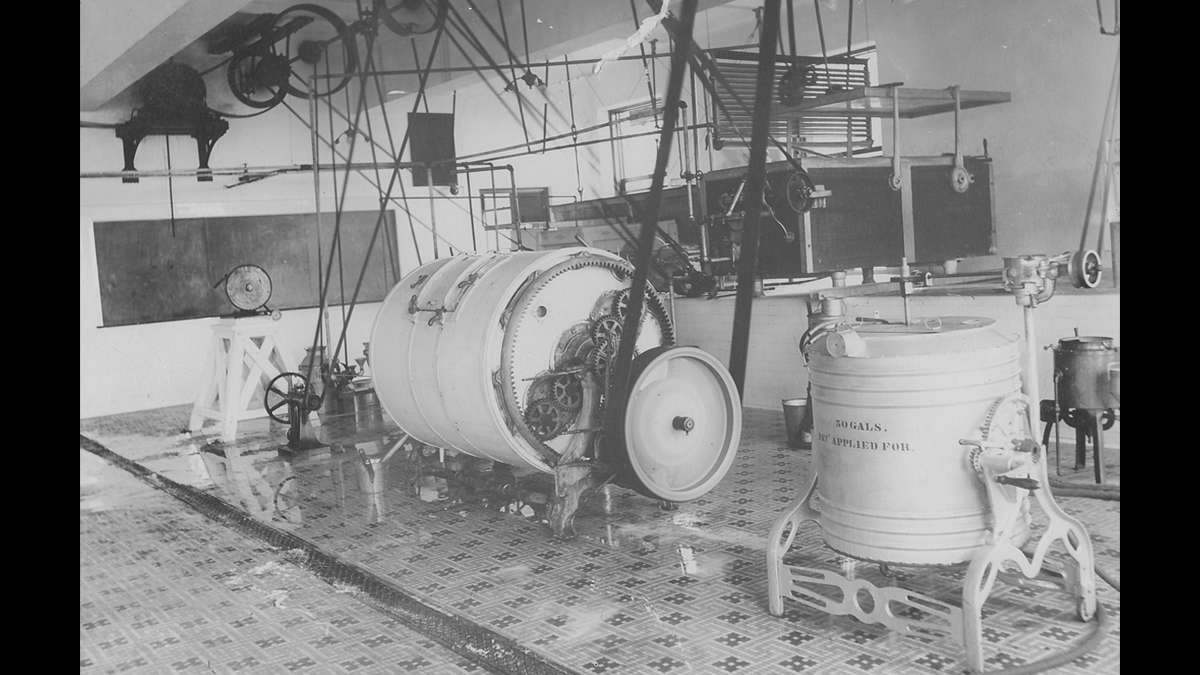
The State College Creamery seen in 1908. The Creamery’s ice cream short course first began in 1892. A quart of milk at the Creamery was sold for 5 cents. (Image courtesy of the Centre County Historical Society)
-
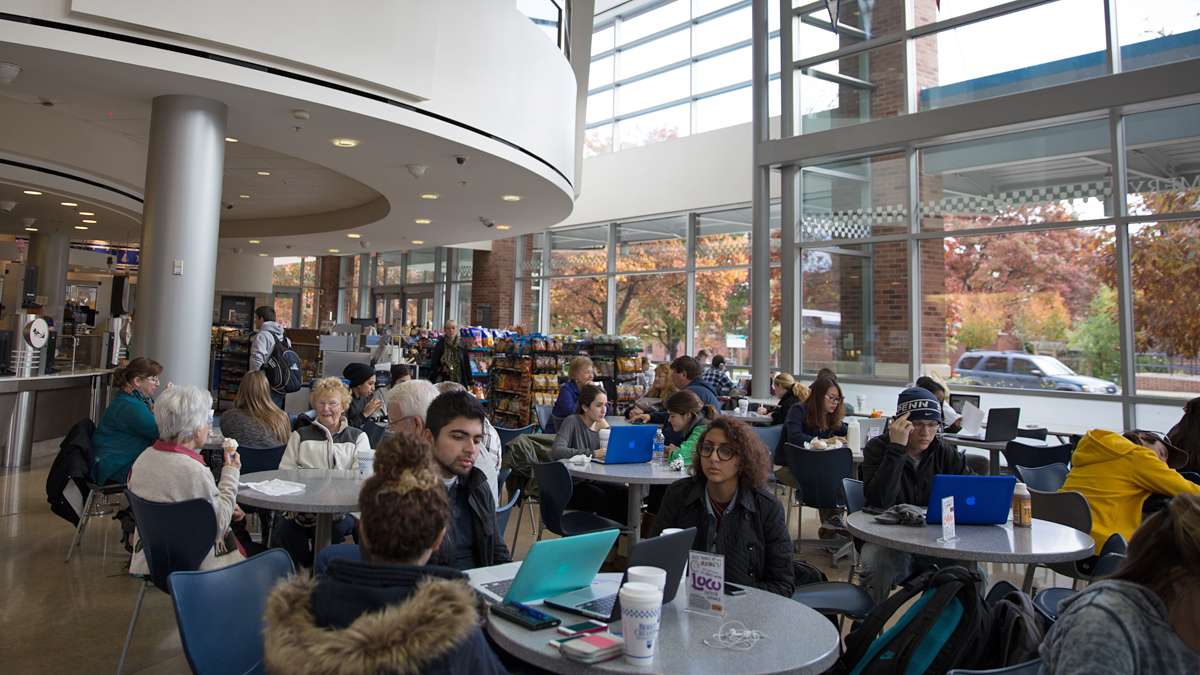
Today, the Berkey Creamery is located on the first floor of the Food Science Building. The Creamery still makes homemade ice cream as well as cheese, sour cream and frozen yogurt. (Lindsay Lazarski/WHYY)
-
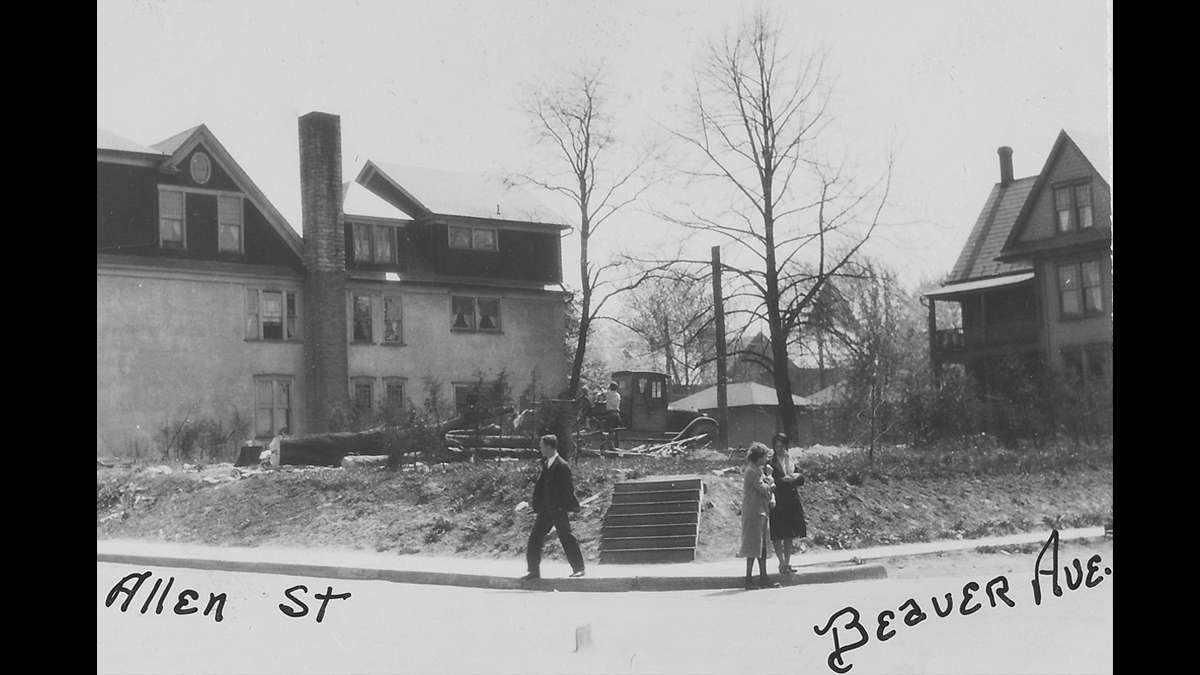
Debris of a building and tree shown on an empty lot at the intersection of Beaver Ave and Allen Street in downtown State College circa 1930. (Image courtesy of the Centre County Historical Society)
-

State College’s Schlow Centre Region Library on the corner of Beaver Avenue and Allen Street. (Lindsay Lazarski/WHYY)
-
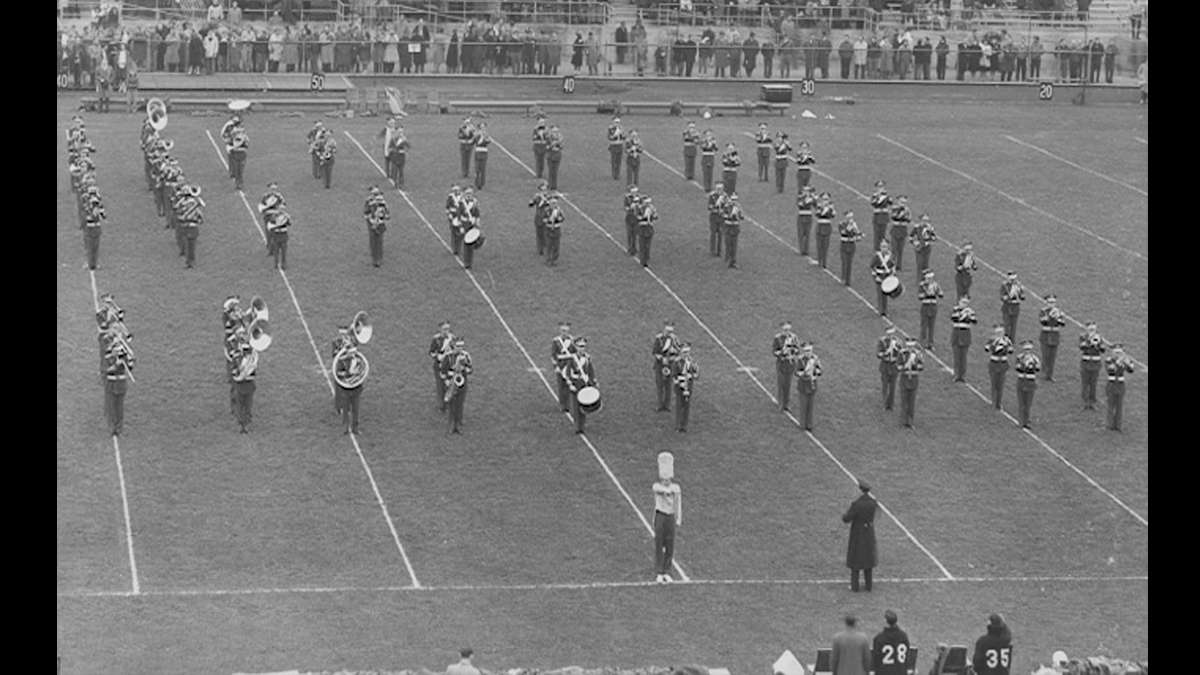
Penn State’s Blue Band performs in 1949. (Image courtesy of the Penn State University Archives)
-
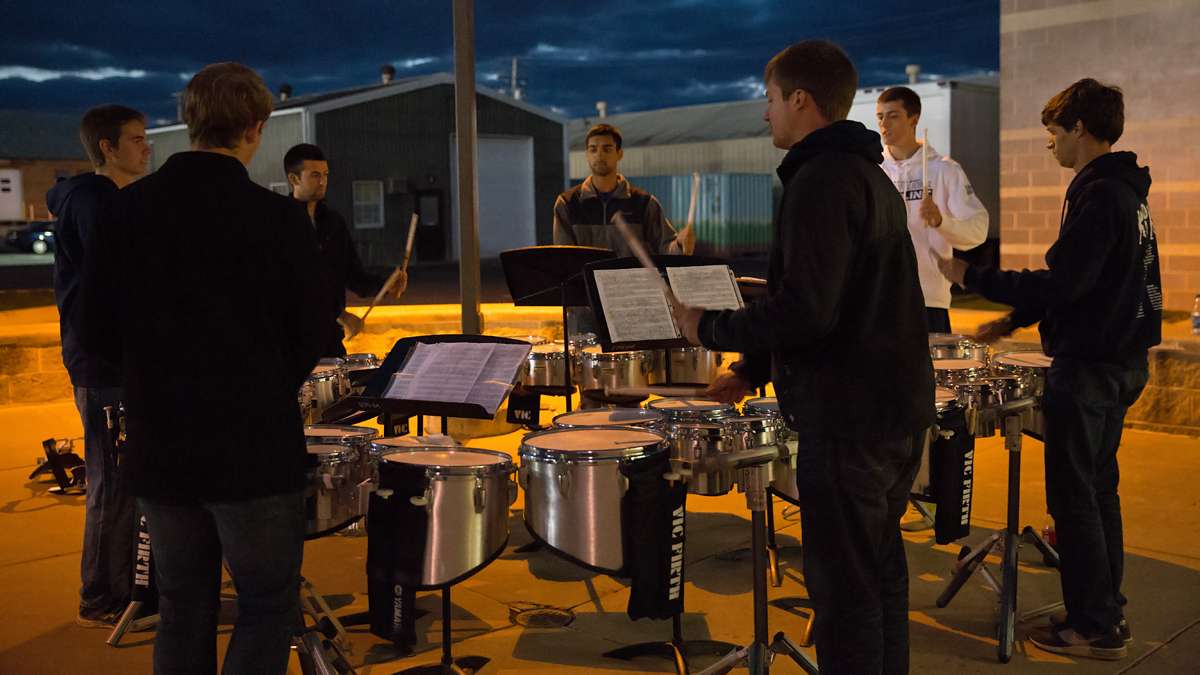
Members of the Penn State Blue Band percussion section rehearse before an upcoming home game. (Lindsay Lazarski/WHYY)
-
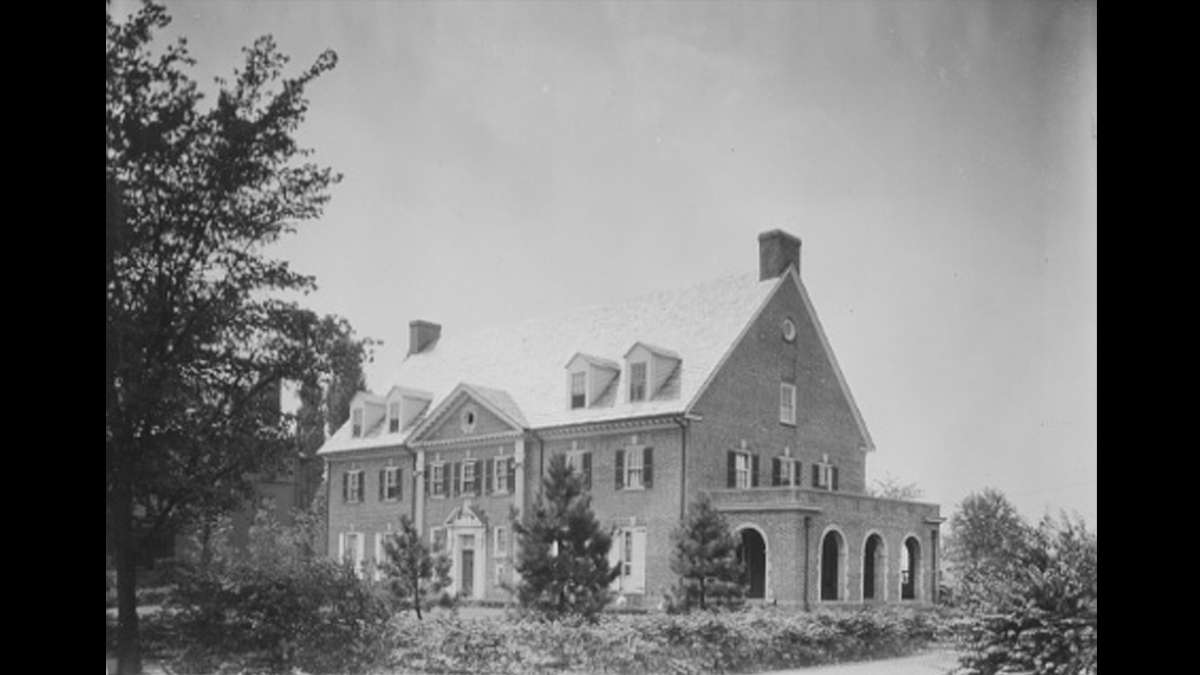
Sigma Nu fraternity house on Penn State Campus (Image courtesy of the Penn State University Archives)
-
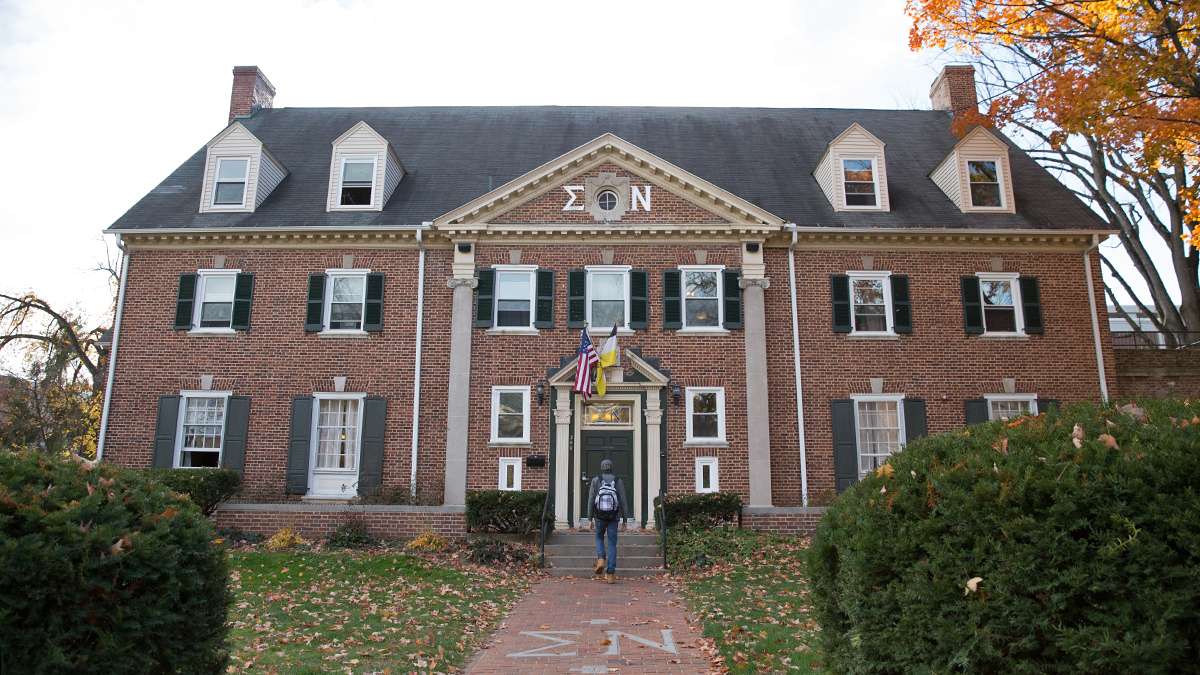
The local chapter of Sigma Nu on Burrows Street was founded in 1909. (Lindsay Lazarski/WHYY)
-
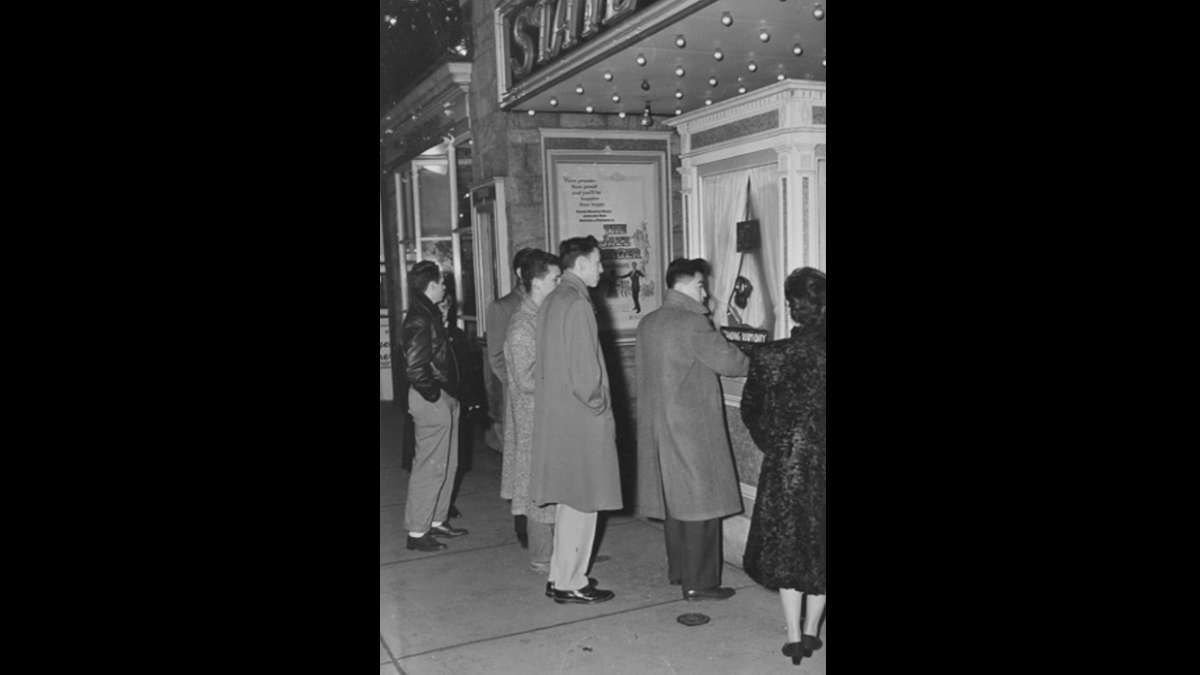
Patrons wait in line for tickets at The State Theater. Warner Brothers opened the theater in 1938. The company tested four different films each week and charged 30 cents for a matinee, 35 cents for an evening feature. (Image courtesy of the Penn State University Archives)
-
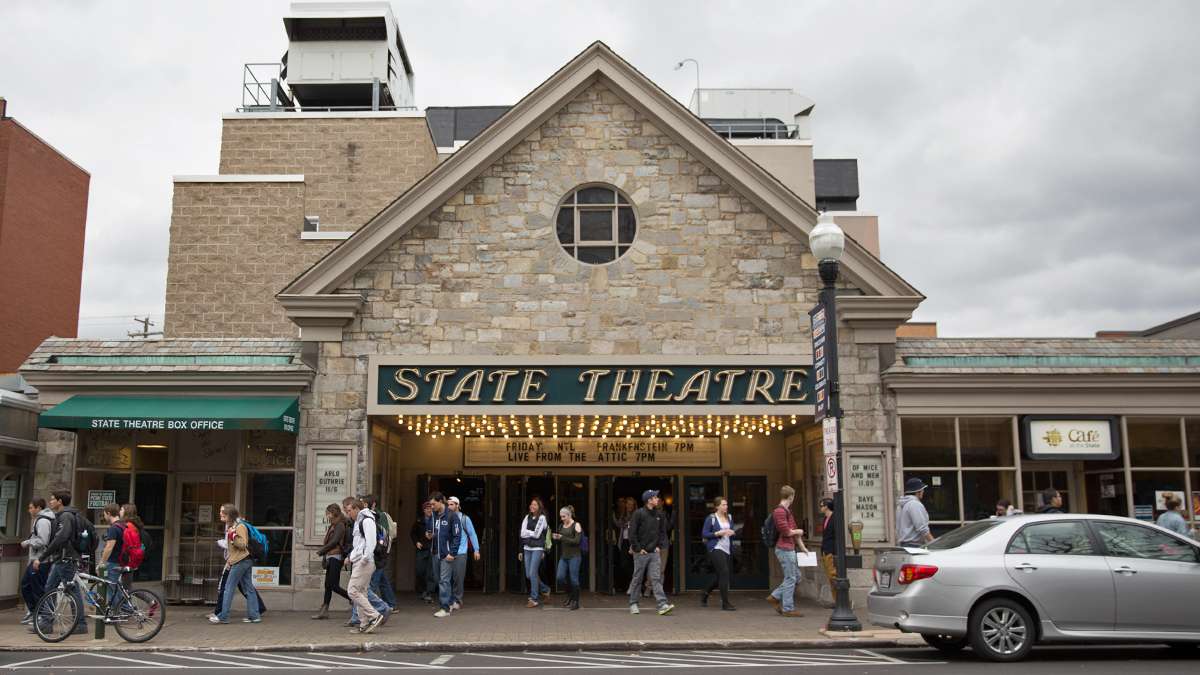
Students exit The State Theater after a matinee show. The theater closed for five years and was reopened after renovations in 2006 as a community performance venue. (Lindsay Lazarski/WHYY)
-
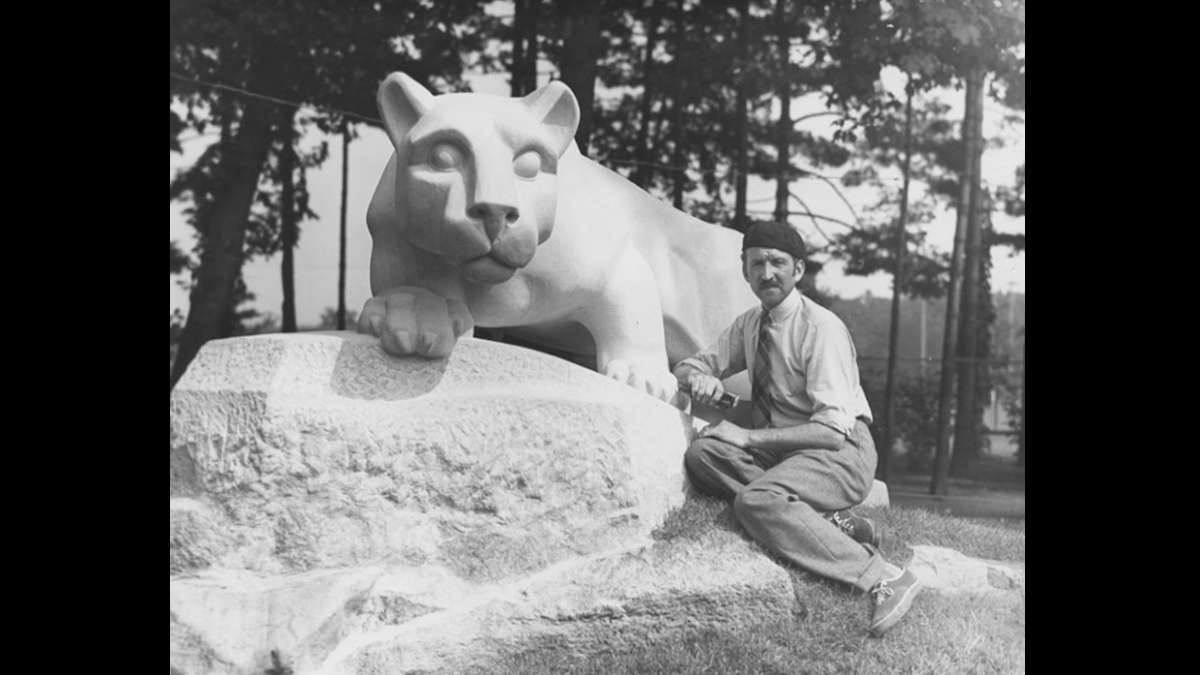
Sculptor Heinz Warneke at the base of the Nittany Lion Shrine. He created the sculpture out of Indiana limestone in 1942. The shrine was a gift from the class of 1940. (Image courtesy of the Penn State University Archives)
-
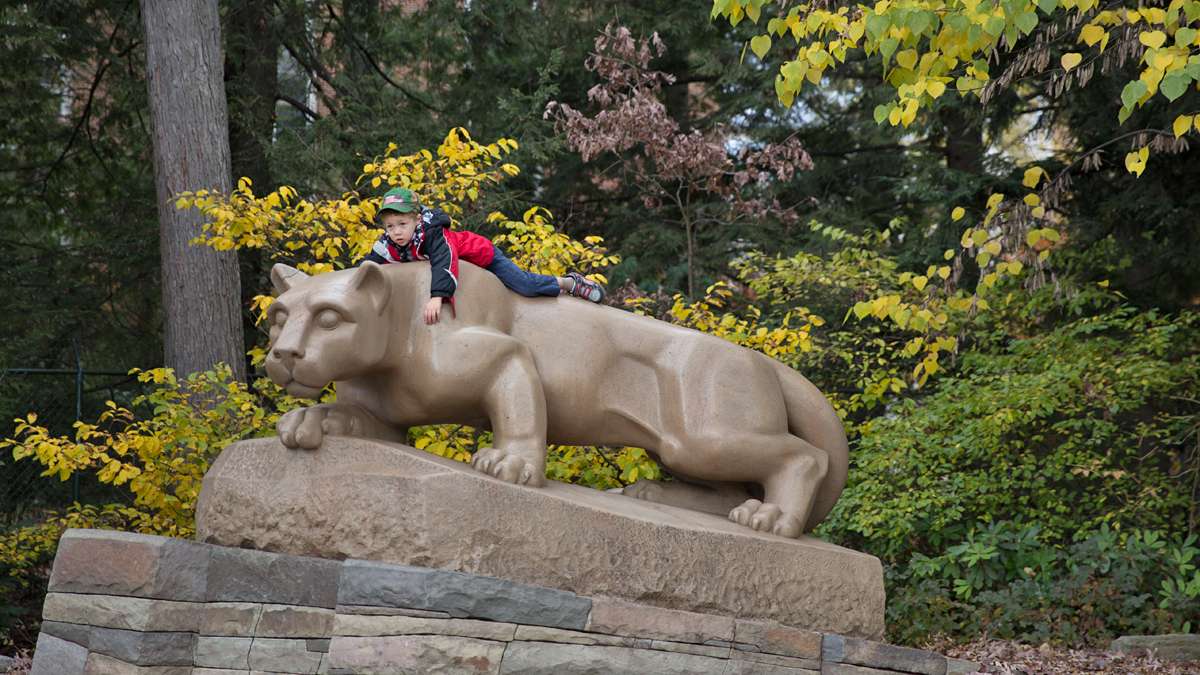
Brayden King, 4, lies on top of the Nittany Lion Shrine as his grandmother looks on. (Lindsay Lazarski/WHYY)
-
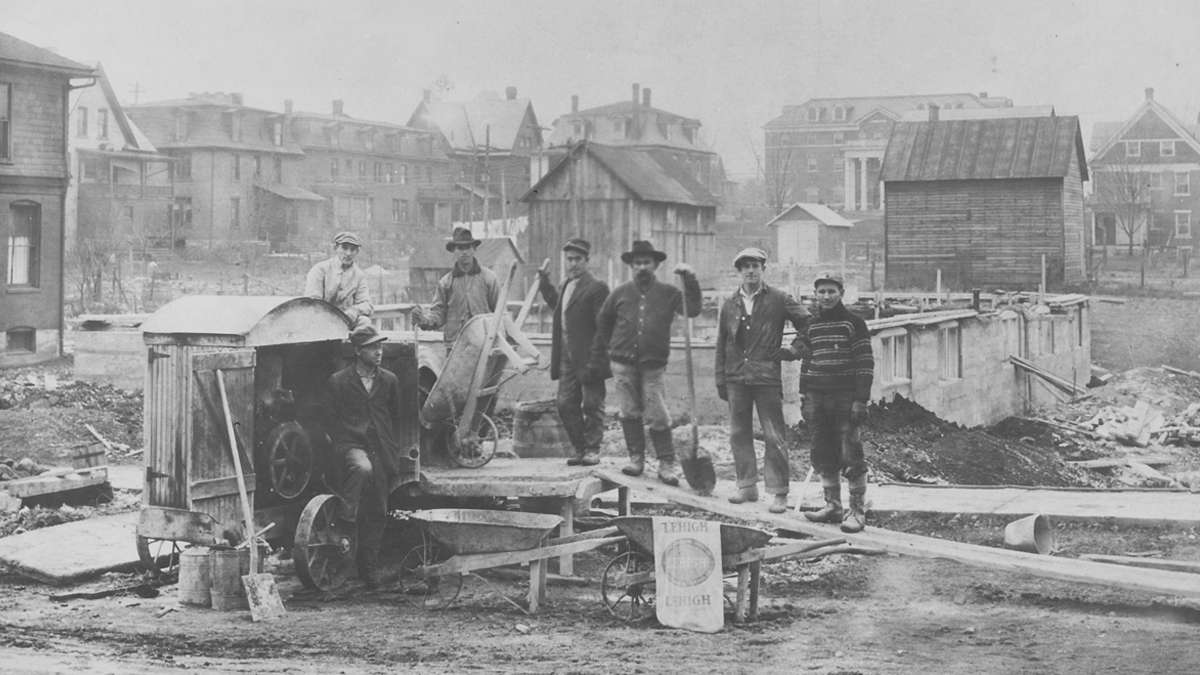
A group of workers build the former Bershire House on West Beaver Avenue in State College, Pa. circa 1916. (Image courtesy of the Centre County Historical Society)
-
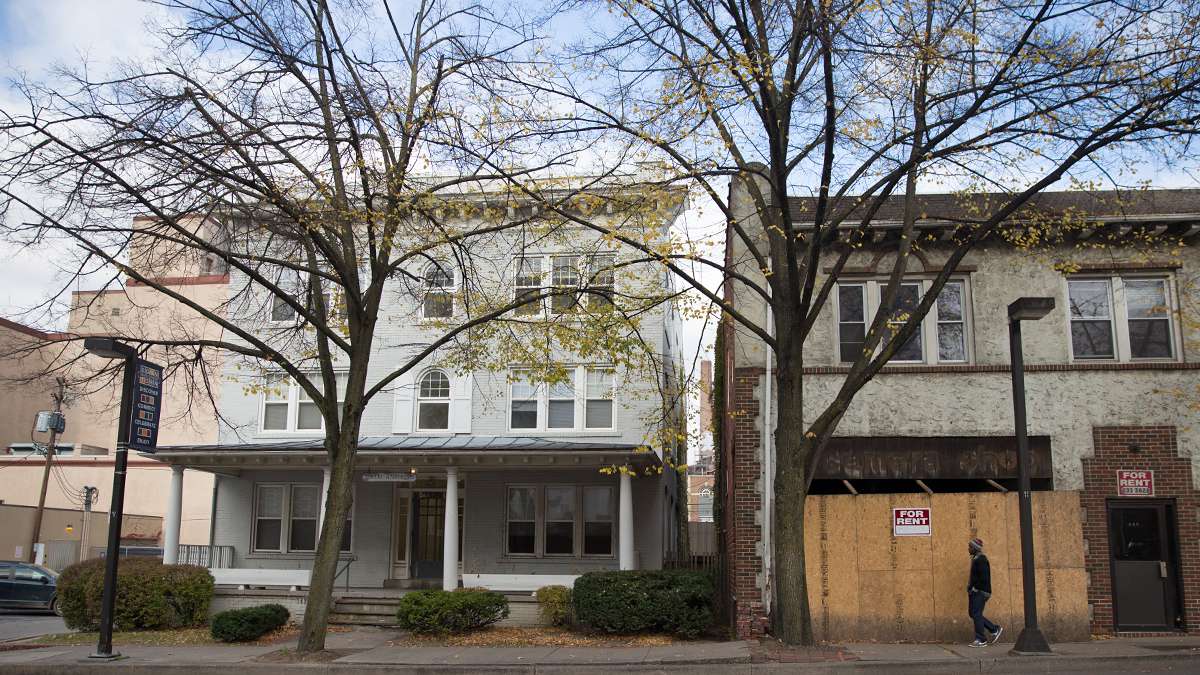
Today, the Nor-Lea apartments (left) and a former camera shop are on West Beaver Avenue at the same location. (Lindsay Lazarski/WHYY)
Then and Now is an ongoing photographic series from Keystone Crossroads, looking at historical images and photographs of today from Pennsylvania cities and towns.
Penn State began as a small agricultural college nearly 160 years ago, intended to teach young men hard work, simplicity, and to improve methods of farming in Centre County, Pennsylvania.
The founders of the Farmer’s High School of Pennsylvania worried the state’s agricultural economy was losing its workforce to manufacturing and the allures of city life.
By the beginning of the 20th century, the college expanded its focus from agricultural studies to a curriculum that included more traditional disciplines of business, law, engineering, sciences and liberal arts.
Today, it may be difficult to recognize the school that was once designed for young farmers.
The college that began on 200 acres of donated land in Centre County spans out to 24 campuses across the state, about 98,000 students, and a $4.3 billion operating budget.
At State College, more than 46,000 students — undergraduate and graduate — attend Penn State at University Park campus. That’s about 4,000 more students than residents who live in the borough year round.
Like other college towns, it’s hard to tell where the boundaries of where Penn State end and where the borough begins.
A walk through downtown State College feels like an extension of the university. Small businesses cater to students. Flags of rival universities are strung across a quaint alley. The words, “We are …” are proudly displayed on a window pane.
Throughout the years, the university has maintained its agricultural roots as an important research intuition and through the College of Agricultural Sciences.
The Penn State Creamery still churns out homemade ice cream. Students research plant sciences at campus greenhouses and pigs marked with PSU graze a hillside near Beaver Stadium.
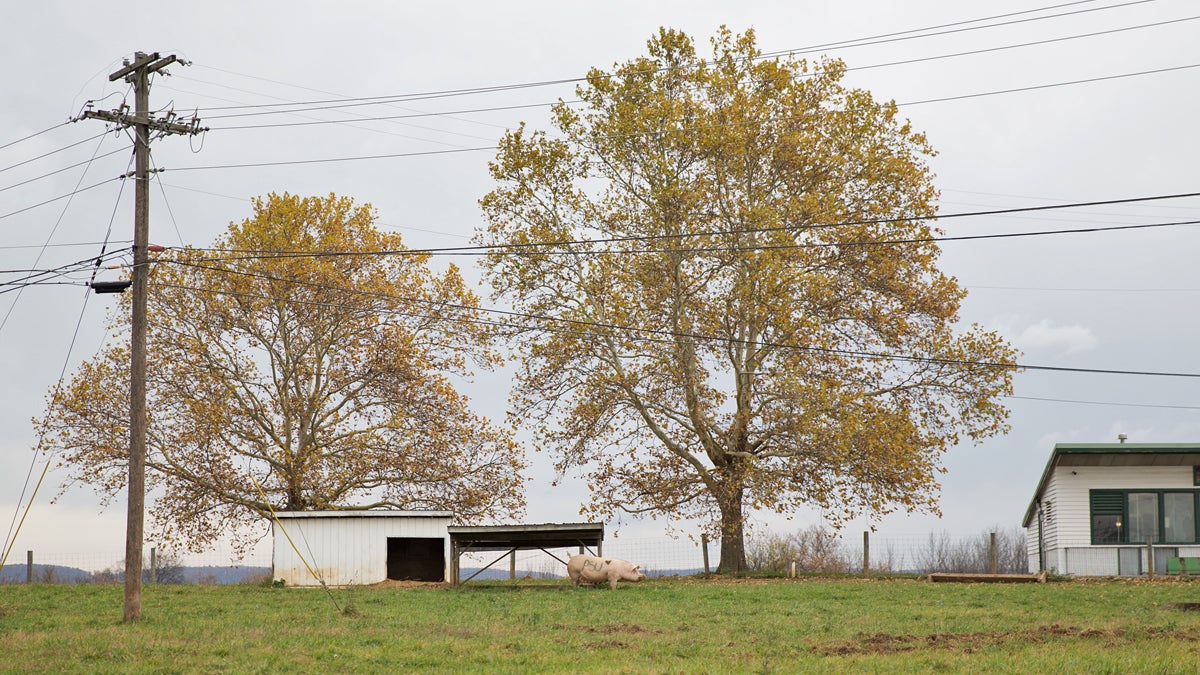
WHYY is your source for fact-based, in-depth journalism and information. As a nonprofit organization, we rely on financial support from readers like you. Please give today.



